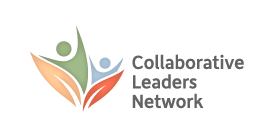Create a collective vision statement that describes a successful outcome for the issue and establish core values that will guide action planning.
Developing a vision for the future is often an effective way to help groups recognize the common ground they share or wish for future generations. Visions typically look ahead 20 to 50 years. Taking such a long-term perspective helps people avoid what may be perceived as current, self-serving interests and instead look forward to what will benefit everyone.
The vision statement describes what future success related to the issue would look like in ideal terms. A vision is written in the present tense, as if describing what is real at the moment; it includes results that are being achieved and identifies programs or characteristics that are helping to accomplish those results. The strategic vision statement provides direction and inspiration for goal setting and action planning in the next stage.
The common values identified by the collaboration group members form the foundation of their thinking on the issue. These can be community values if the problem being addressed relates to the community, or internal values that drive an organization. While there is an entire universe of values, participants are asked to identify the ones that the group can agree to abide by in spite of their differences. These values underlie the group’s work together and determine how they will interact with each other and what approach they will take to action planning in the next stage.
A collective vision often helps defuse differences of opinion, and can serve to ground the discussion and keep people focused on resolving the issue rather than complaining or placing blame.
